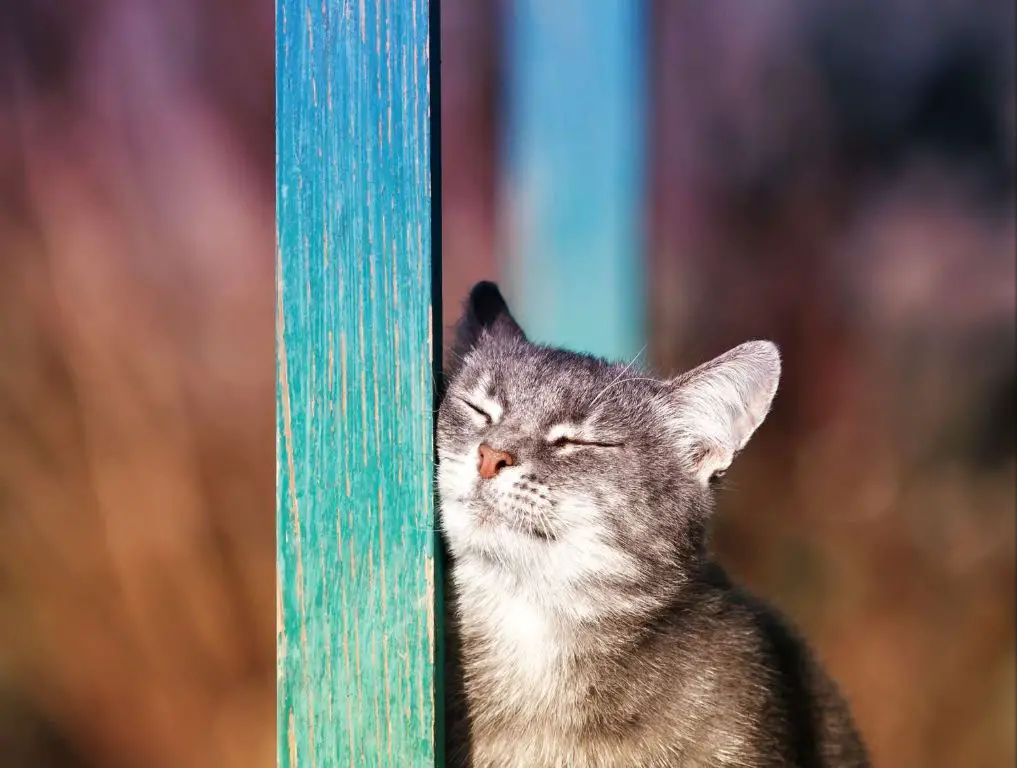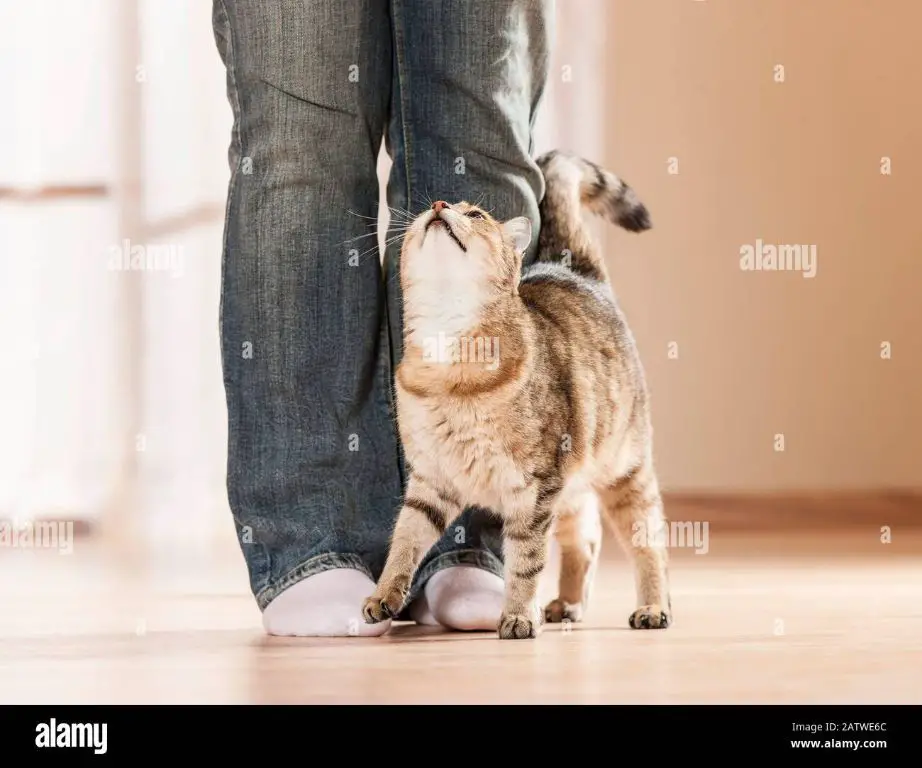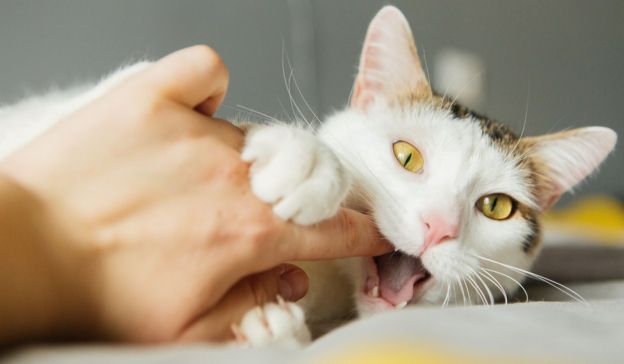Is your cat showing affection when it rubs its face against yours, or is it just looking for attention? Cats express themselves differently than dogs, so their affectionate gestures may be harder for owners to interpret. While cats do show love toward their owners, the meaning behind certain behaviors like face-rubbing can be complex. Understanding the nuances in how cats communicate can help owners better interpret signs of feline affection.
What Is A ‘Kiss’ To A Cat?
When humans kiss, it is typically a sign of affection and love for one another. For cats however, the act of kissing does not hold this same meaning. Cats do not kiss each other or humans in the same way that humans share kisses. This is because cats rely more on scent for communication, and less on physical touch and gestures for showing affection.
While cat owners may attempt to show affection by giving their cat a kiss, the cat likely does not interpret this as a ‘kiss’ in the human sense. Rather than understanding it is a gesture of love, cats may instead see it as foreign grooming or petting behavior from their human. So when a human kisses a cat, the cat does not reciprocate the kiss or necessarily understand the human’s intention behind it.

Overall, while owners may try to kiss their cats, cats don’t actually kiss their owners back in the same romantic or affectionate way. Their brains are simply not wired to understand the human behavior of kissing in the same way humans do.
Cats Use Scent for Communication
Cats have special scent glands that they use to communicate with other cats. According to Cat Care Center, cats have interdigital glands on the pads of their paws that release pheromones when stretched. These pheromones allow cats to mark their territory. Cats also have scent glands on their cheeks, lips, chin, tail, and anus.
As explained by Catster, cats use their scent glands to mark objects, locations, and people as familiar and safe. When a cat rubs against you, it is depositing pheromones from glands around its mouth as a way to bond with you. So cats use scent marking both to claim territory and to show affection.
Cats May See Kisses As Grooming
Licking and nibbling can be a form of social grooming for cats. Cats often lick and groom each other as a way to strengthen social bonds. According to one source, “Cats perform this type of social grooming because they want the other cat to understand they aren’t threatening. They also want the other cat to recognize the relationship” (https://heartandpaw.com/pet-parent-resources/6-reasons-cats-groom-each-other).
When a human kisses a cat, the cat may interpret it as social grooming. The licking and nibbling motion of a kiss can resemble the way cats groom each other. So cats may see kisses as a friendly gesture and an attempt by humans to bond with them. However, kisses that are too forceful could overwhelm a cat, since cats control social grooming interactions through subtle cues.
Cats Can Show Affection By Rubbing
One of the most common ways cats show affection is by rubbing their bodies against people or objects. When a cat rubs against you, they are depositing pheromones from glands around their face and body to mark you as “safe” and part of their trusted social group. According to PetMD, this behavior is called allomarking and is a friendly greeting that helps cats familiarize themselves with trusted individuals.
Cats tend to rub against people’s legs or ankles as this allows them to deposit pheromones directly onto your clothes and skin. The act of rubbing is a way for cats to mix their scents with yours, showing acceptance and affection. So when your cat rubs up against you, they are saying “I like you!” in the feline language. It’s a natural behavior that stems from their reliance on scent signals and touch to communicate within their social groups.

Purring Indicates Happiness
Purring is one of the main ways cats express happiness and contentment. When cats purr, it indicates they are feeling calm, secure, and comfortable. Some key reasons cats may purr include:
Relaxation – Cats often purr when resting or being petted by their owners, signaling they are completely at ease. The rhythmic purring during rest may help promote physical and mental relaxation.[1]
Pleasure – Purring frequently occurs when cats are being petted or stroked, especially in preferred areas like under the chin or base of the tail. They associate this physical affection with pleasure.[2]
Bonding – Mother cats purr to their nursing kittens, likely as a bonding mechanism and sign of reassurance. Many domestic cats continue purring into adulthood to bond with their human families.
Overall, when a cat is purring consistently, it’s a clear indicator of happiness and contentment. The purr conveys to others that they are feeling safe and secure in their environment and relationship with their owners.
[1] https://www.newscientist.com/question/why-do-cats-purr/
[2] https://www.webmd.com/pets/cats/why-do-cats-purr
Kittens Learn Kisses From Mothers
When kittens are born, their mothers lick them as a form of grooming. Mother cats spend time every day licking their kittens to clean them, stimulate them to urinate and defecate, and bond with them. Kittens likely come to associate this licking with affection from their mother.

As the kittens grow, the mother cat continues to lick them when grooming and to show affection. The kittens learn that licking is a social behavior that indicates care. When humans kiss cats, especially on the head, cats may relate this to the licking from their mother and interpret it as a sign of affection.
So while cats don’t innately understand what kisses mean to humans, kittens can come to learn that kisses are a gesture of care through their interactions with their mothers. This early experience of being licked shapes how cats perceive kisses when humans do it.
Cats May Interpret Kisses As Play
Cats often exhibit mouthing behaviors during play that resemble gentle biting or nibbling. When a cat delivers playful bites, it typically does not break the skin. The mouthing behaviors release endorphins in the cat and allow them to act out their natural hunting instincts in a safe manner.
A cat may interpret kisses from their owner in a similar way to play biting. Since the kisses involve touching the cat’s face, the cat may react with reciprocal gentle bites or nibbles. This does not necessarily mean the cat dislikes the kisses. On the contrary, the cat returning the kisses with playful “love bites” can indicate they are enjoying the interaction. It becomes the cat’s way of bonding and reciprocating the perceived playful gestures from the owner.
As stated in an article from Hill’s Pet Nutrition, “You may be taken aback by unexpected behavior like play biting, but don’t consider it a sign that your kitty doesn’t love you. Cats have unique ways of showing affection.” [1]

Kissing Risks Overstimulating Cats
While kisses may seem like a sweet gesture of affection to humans, too much direct contact like kissing can actually stress out cats and lead to overstimulation (Overstimulated Cats, https://www.ddfl.org/resources/overstimulated-cats/). Cats have sensitive whiskers and ears, and too much unwanted touching there can make them feel trapped or defensive. A cat being overstimulated may demonstrate signs like skin twitching, quickly turning their head, biting, scratching, or even aggressive attacks (Overstimulation in Cats, https://hawaiianhumane.org/wp-content/uploads/2020/12/Feline-Behavior-Resources-Overstimulation-in-Cats.pdf).
While every cat has different tolerance levels, repeated direct kisses could overstimulate a cat who prefers less physical affection. It’s important for owners to learn their cat’s preferences and watch for signals that indicate overstimulation. Providing a cat agency and control over their environment can help prevent issues. Overall, moderation is key when showing a cat physical affection (Cats – Overstimulation, https://www.maddiesfund.org/cat-overstimulation.htm). While an occasional kiss may be fine, kissing a cat too frequently risks overstimulating them.
Conclusion
In summary, cats express affection differently than humans. While humans show love through kisses and hugs, cats rely more on scent, touch, vocalizations, and body language. Cats may interpret kisses from humans as grooming or play, rather than affection. Some cats enjoy kisses and cuddling, while others may become overstimulated. Key signs that cats are bonded to their owners include rubbing, purring, and grooming. Though cats show their feelings differently, they are still capable of forming strong attachments and relationships. The key is learning to read subtle feline cues and respect each cat’s unique personality and preferences. With patience and attention, cat owners can develop deep connections with their felines.

